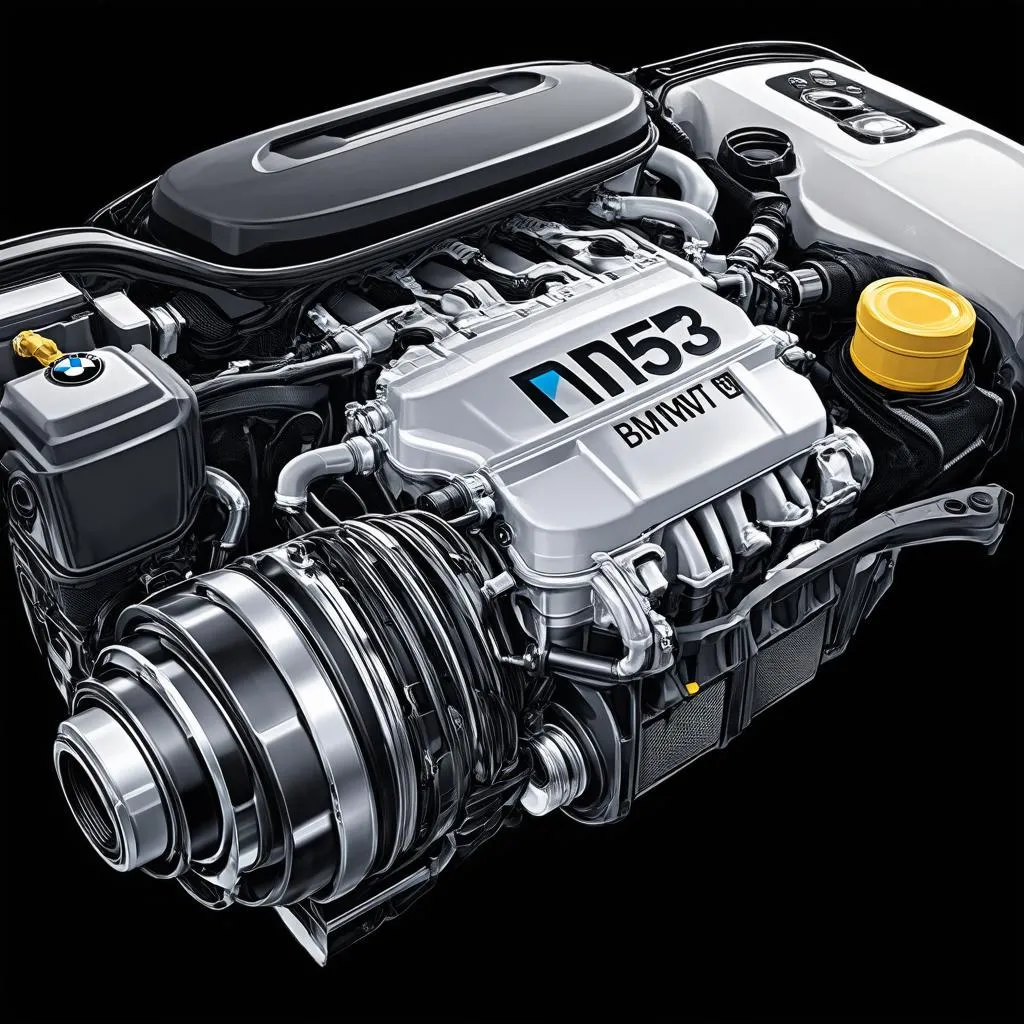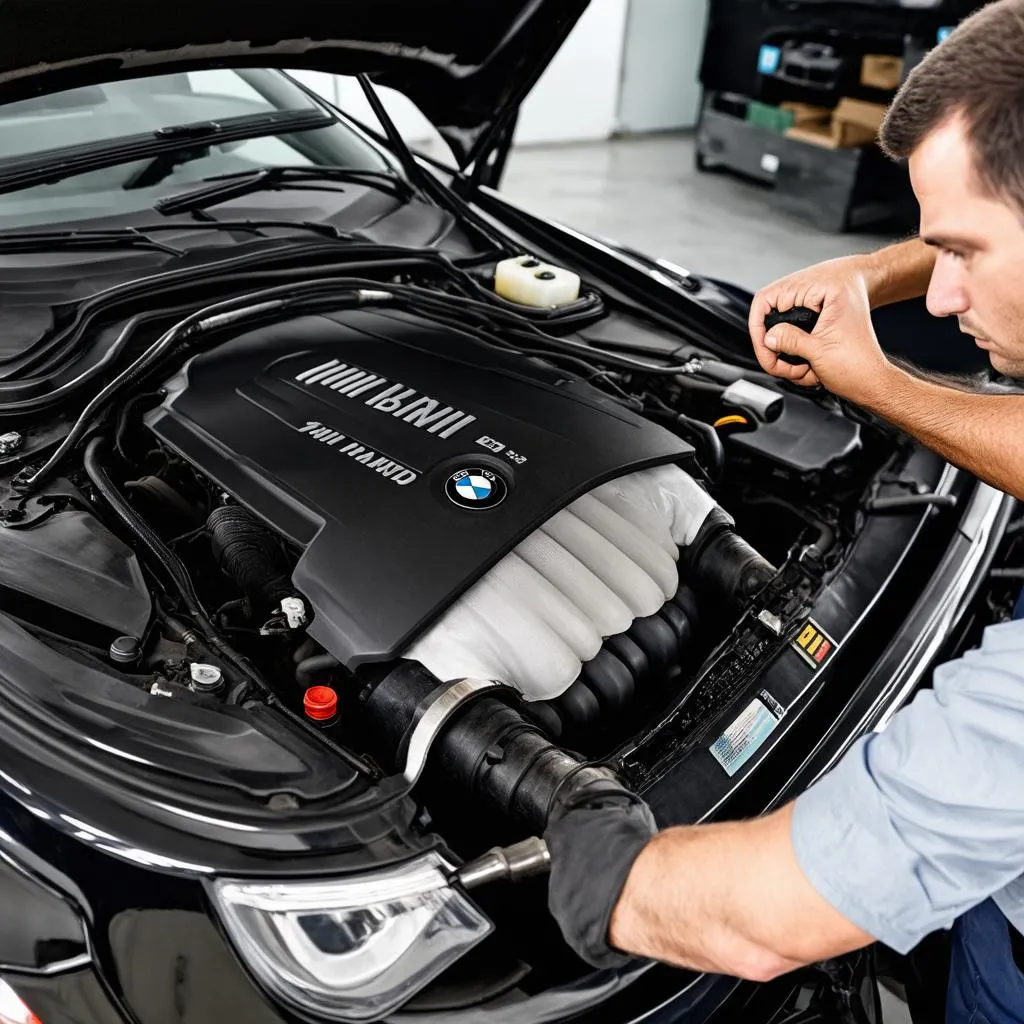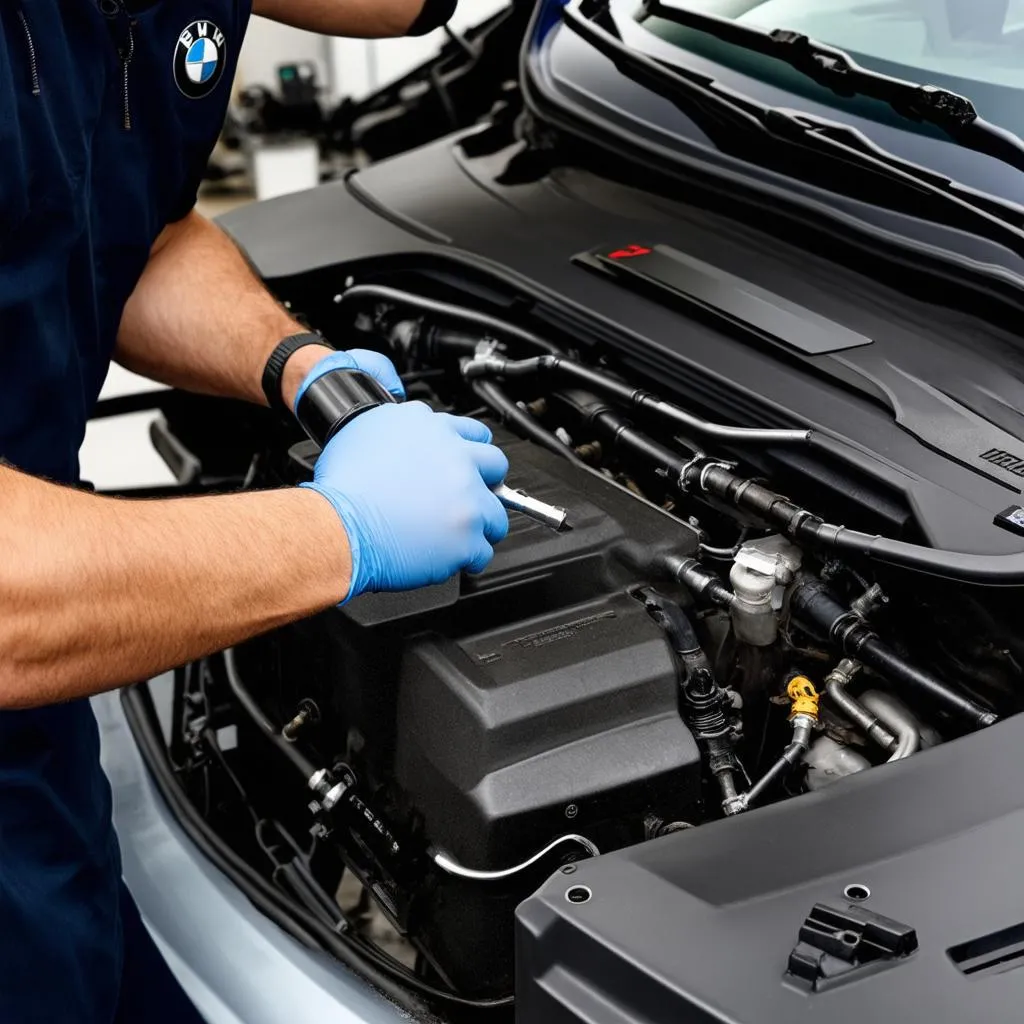BMW N53 Engine: A Comprehensive Guide for Owners and Mechanics
Have you ever found yourself staring at your BMW’s dashboard, wondering what that “check engine” light meant? You’re not alone. Many BMW owners, especially those with the N53 engine, have encountered perplexing engine issues. But fear not! This guide will delve into the intricacies of the Bmw N53 engine, equipping you with the knowledge to understand its strengths, weaknesses, and how to address common problems.
Understanding the BMW N53 Engine
The N53 engine, introduced in 2007, is a 3.0-liter, six-cylinder engine found in various BMW models, including the 3 Series, 5 Series, and X3. Known for its smooth operation and impressive power output, the N53 engine is lauded for its innovative design, incorporating direct injection, Valvetronic variable valve lift technology, and Double VANOS variable valve timing.
What makes the N53 engine so special?
- Direct Injection: This technology allows for precise fuel delivery, resulting in improved fuel economy and reduced emissions.
- Valvetronic Variable Valve Lift: This system adjusts the valve lift, optimizing engine performance and efficiency across various driving conditions.
- Double VANOS Variable Valve Timing: This system precisely controls valve timing, optimizing power and torque delivery at different engine speeds.
The Yin and Yang of the N53 Engine: Balancing Performance and Reliability
While the N53 engine boasts advanced features, it also presents certain challenges. Some owners have reported experiencing issues with carbon buildup, oil consumption, and timing chain problems. These issues, while common, are often manageable with proper maintenance and timely interventions.
Let’s explore these challenges in detail:
Common N53 Engine Problems and Solutions
1. Carbon Buildup: The Silent Enemy
Direct injection engines, like the N53, are prone to carbon buildup on intake valves. This occurs when fuel and combustion byproducts accumulate on the valve surfaces, hindering proper airflow and affecting engine performance.
Signs of Carbon Buildup:
- Rough idle
- Reduced power
- Increased fuel consumption
Solutions:
- Regular Maintenance: Adhering to scheduled maintenance intervals, including oil changes, spark plug replacements, and air filter replacements, can help minimize carbon buildup.
- Fuel System Cleaning: Using fuel system cleaners designed for direct injection engines can help remove carbon deposits and restore optimal engine performance.
- Intake Valve Cleaning: In severe cases, a professional mechanic may need to clean the intake valves to remove carbon buildup. This can be done using specialized equipment and cleaning solutions.
2. Oil Consumption: A Lubrication Riddle
The N53 engine has a reputation for oil consumption, which can be attributed to various factors, including:
- Valve Stem Seals: Worn or damaged valve stem seals can allow oil to leak past the valves and into the combustion chamber, leading to oil consumption.
- Piston Rings: Worn or damaged piston rings can allow oil to leak into the combustion chamber, contributing to oil consumption.
- Oil Separator: A faulty oil separator can allow oil to escape into the intake manifold, resulting in oil consumption and potential engine damage.
Solutions:
- Valve Stem Seal Replacement: Replacing worn or damaged valve stem seals can prevent oil leakage and reduce oil consumption.
- Piston Ring Replacement: Replacing worn or damaged piston rings can also reduce oil consumption.
- Oil Separator Replacement: If the oil separator is faulty, it should be replaced to prevent oil leakage and ensure proper engine operation.
3. Timing Chain Problems: The Rhythmic Rhythm of a Engine
The N53 engine uses a timing chain to synchronize the crankshaft and camshafts, ensuring proper valve timing and engine performance. Over time, the timing chain can stretch or wear out, leading to problems such as:
- Engine Noise: A stretched or worn timing chain can cause a rattling or clicking sound from the engine.
- Timing Chain Failure: A completely broken timing chain can cause catastrophic engine damage.
Solutions:
- Timing Chain Replacement: If the timing chain is stretched or worn, it should be replaced. This is a complex procedure that requires specialized tools and expertise.
Navigating the N53 Engine: Practical Tips for Owners
1. Regular Maintenance is Key: Staying Ahead of the Curve
Maintaining your BMW N53 engine with regular services is crucial for maximizing its lifespan and preventing costly repairs.
- Oil Changes: Follow the recommended oil change intervals outlined in your owner’s manual.
- Air Filter Replacement: Replace the air filter regularly to ensure optimal airflow and engine performance.
- Spark Plug Replacement: Replace spark plugs according to the recommended schedule.
- Fuel System Cleaning: Consider using fuel system cleaners periodically to help prevent carbon buildup.
2. The Wisdom of the Mechanic: Seeking Expert Guidance
Consult a qualified BMW mechanic for any engine problems, especially if you notice any of the following symptoms:
- Check Engine Light: A check engine light can indicate a wide range of issues, from minor problems to major engine malfunctions.
- Engine Noise: Unusual noises coming from your engine, such as rattling, knocking, or clicking sounds, could signal a serious problem.
- Loss of Power: If your engine loses power or hesitates during acceleration, it could be a sign of a mechanical issue.
3. Listen to Your Engine’s Whisper: Early Detection is Crucial
Staying vigilant and noticing subtle changes in your engine’s behavior can help you identify issues early, potentially preventing major problems down the line.
- Pay attention to any unusual noises, vibrations, or smells coming from your engine.
- Monitor your fuel economy. A sudden drop in fuel economy could indicate an engine problem.
- Check your oil level regularly. If your oil level is consistently low, it could be a sign of oil consumption.
Embracing the N53 Journey: A Balanced Perspective
The BMW N53 engine, while known for its performance and refinement, does require attentive maintenance and potential repairs. By understanding its strengths and weaknesses, and implementing preventive measures, you can ensure a satisfying and reliable driving experience.
Looking Beyond the N53: Exploring Related Topics
1. The N53’s Cousin: The BMW N50 Engine
The BMW N50 engine, a predecessor to the N53, shares some similarities but also has its own unique characteristics. You can learn more about the N50 engine and its differences from the N53 in our article: https://cardiagxpert.com/bmw-n50-motor/.
2. Decoding the Check Engine Light: Understanding Diagnostic Codes
When the check engine light illuminates, it’s essential to know how to interpret the diagnostic codes. Our article on diagnosing and understanding check engine light codes can provide valuable insights: [Insert Link to Relevant Article on cardiagxpert.com]
Your Next Steps: Taking Control of Your BMW
If you’re facing N53 engine issues, don’t hesitate to reach out to our team of experienced automotive professionals at CarDiagXpert. We offer a comprehensive range of services, including diagnostics, repairs, and expert advice.
We understand the intricacies of BMW engines and are committed to providing you with the highest level of service and support.
Contact us today via WhatsApp: +84767531508 for a free consultation and let us help you get your BMW back on the road.
Embracing the Journey: A Final Thought
As you navigate the complexities of owning a BMW with an N53 engine, remember that knowledge is power. Understanding the engine’s quirks and addressing potential issues promptly can enhance your driving experience and ensure many years of enjoyment.
 BMW N53 Engine Diagram
BMW N53 Engine Diagram
 BMW N53 Engine Maintenance
BMW N53 Engine Maintenance
 BMW N53 Engine Repair
BMW N53 Engine Repair
